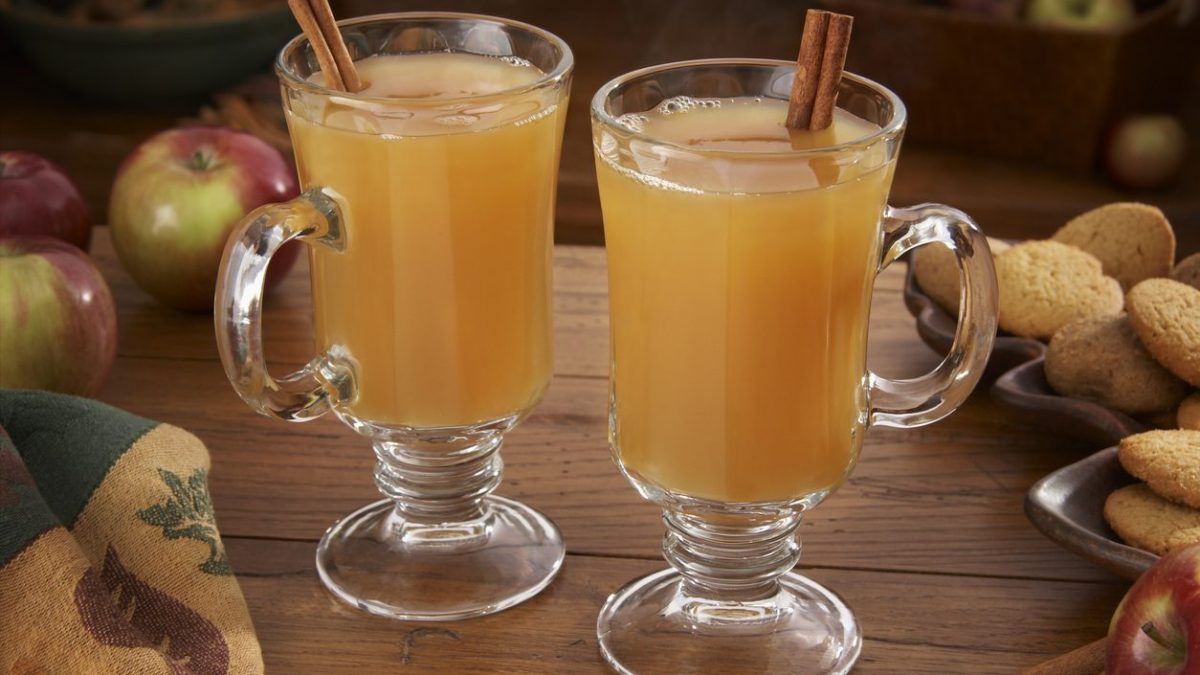
Cider: just mentioning this drink triggers an attraction that's hard to resist. Its allure? The blend of tradition and modernity it embodies, its ability to be a light and sparkling alternative to wine or beer, and its versatility, allowing it to be paired with a wide variety of foods. This famous beverage, originally from Northern Europe, with historical roots stretching back millennia, has a variety of flavors depending on the type of apple used and the degree of fermentation, ranging from sweet to bitter, making it ideal for a variety of occasions, from an aperitif to a full meal.
Cider became particularly popular in Britain and France during the Middle Ages, but it had already spread to various corners of Europe thanks to the Romans, who discovered it during their conquests. Easy to make—the basic ingredient is apples and the fermentation process is fairly simple—it was introduced to America in the 17th century by European settlers and quickly became a favorite beverage there.
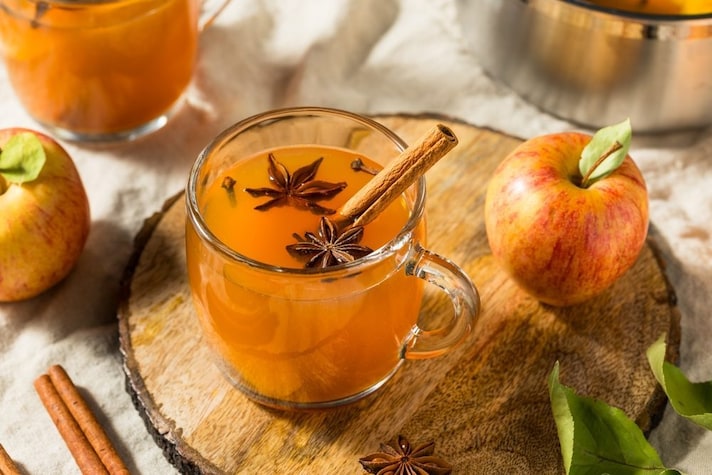
Over the centuries, cider's popularity has gradually waned, replaced by the more common wine and beer. However, thanks to its sophistication and craftsmanship, it has been experiencing a growing revival in recent years. Today, cider is one of the most popular beverages during the holidays. Here's everything you need to know about this ancient and fascinating drink.
What is Cider: The History of An Ancient Drink
Apple cider is a fermented beverage popular in France (especially in the Normandy area), the United Kingdom (where it's called mulled cider), and the United States, where it's known as apple cider and is especially popular during the fall. It's also produced in some areas of Northern Italy, though it's less common than in the rest of Europe.
There are two different varieties of cider: the best known and oldest is the mildly alcoholic version, fermented using natural yeasts present in apple peels or selected yeasts. There is also a non-alcoholic version, the easiest to make at home, obtained simply by simmering fruit juice with spices and herbs. The word "cider," used to refer to this particular apple juice, comes from an Old French term that began to be used around 1130-1140, the period in which the drink began to become particularly popular.
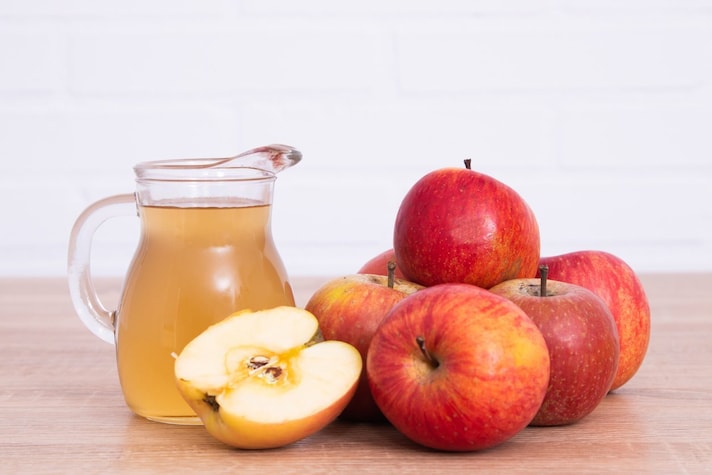
In reality, however, cider has origins that go back far beyond the Middle Ages: the very first trace of a drink like cider (but pear-based, in this case) found in archaeological documentation comes from Spain, in the Ambrona Valley of the Soria region, dating back to the mid-3rd millennium BC. Apple cider, on the other hand, seems to have appeared around the 13th century BC, the period in which the first apple plantations appeared in Egypt and Asia Minor: there are several historical accounts that tell of how cider was already beloved by the civilizations of Egypt and Byzantium, although it was further spread thanks to the Greeks and Romans, who were particularly fond of it. In the Middle Ages, apple cider reached its maximum expansion and became a drink closely linked to the territories of Austria, Normandy, and Great Britain, where it was introduced in 1066 by William the Conqueror.
Beginning in the 15th century, cider became a common beverage throughout central and northern Europe, and during this period it was also used for therapeutic purposes: the technical-medical treatises of 1588 by the Norman Julien Le Paulmier, personal physician to Charles IX and Henry III, extolled cider's therapeutic, digestive, diuretic, and anti-flu properties. In the 17th century, in particular, cider replaced wine in the meals of the English aristocracy, thanks also to some aristocratic figures who praised the beverage in their literary treatises.
The apple cider we're talking about is alcoholic cider, the most traditional type obtained by fermentation: its alcohol content is very low, between 3% and 6%, making it particularly popular with those seeking a mildly alcoholic beverage without being too strong. 16th-century scholars, moreover, weren't far off the mark when they called it a "beneficial" drink: thanks to its acidity, cider has excellent digestive properties and is rich in antioxidants, minerals, and vitamins that help purify the body.
When and How to Enjoy Apple Cider
Generally speaking, apple cider is one of the most popular drinks during the colder months of the year, starting in autumn and particularly during the Christmas season, when it is served in a warm version (mulled wine style, so to speak) called "apple wine" and is typical of Christmas markets throughout much of Europe. Furthermore, cider is linked to many cultural traditions and holidays: in England, it is consumed during "Wassailing," a name that refers to the dual ritual of singing in the orchards to ensure a good harvest and singing Christmas carols from house to house, while in Germany, during Oktoberfest, it is as typical as beer.
There is also a more summery and sparkling version of cider, which is consumed very chilled and is perfect for the warmer months, and cider is also often used as an ingredient in cocktails, for example to create an “apple mimosa” or a “cider sangria”.
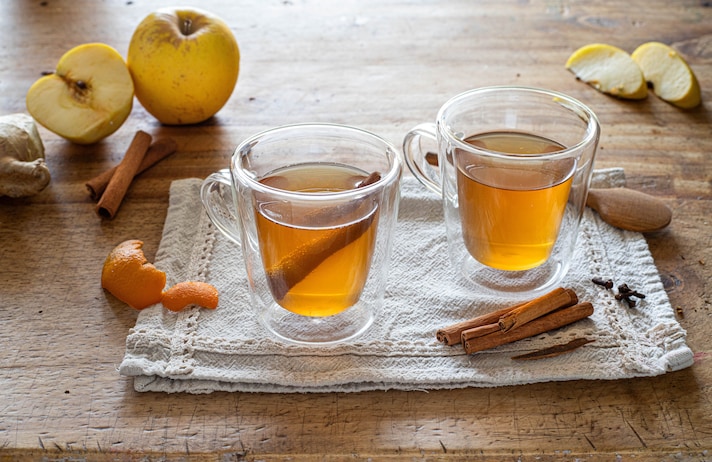
The pairing of cider with foods varies greatly depending on the beverage: cider doesn't have a single flavor; it can be more or less sweet, more or less alcoholic, and more or less fizzy depending on the type of apples used and the production techniques employed. For example, in Great Britain, cider is often dry and less sweetened, while in France (particularly in Normandy and Brittany), "cidre" is often sweet and slightly fizzy.
In general, remember that:
- dry cider is ideal with fish dishes, seafood and white meats;
- Sweet cider is perfect with mature, creamy cheeses such as Camembert or Brie, with spicy dishes and to accompany desserts, in particular desserts such as jam tart and tarte tatin;
- Medium-dry cider is the most versatile, suitable for a wide range of dishes, from cured meats to pork dishes.
How to Make Apple Cider
Traditional cider production begins with the harvest of apples, which are carefully selected to ensure optimal quality. The apples are then crushed to obtain a puree that is pressed to extract the juice, which is then left to ferment for a variable period, ranging from a few weeks to several months, depending on the type of cider desired. For fermentation, either the natural yeasts present on the apple peels alone are used, or selected yeasts can be added that convert the sugars into alcohol and carbon dioxide. In both cases, during the fermentation period, the yeasts convert the sugars in the juice into alcohol, giving rise to cider.
You can make fermented cider at home, but it's a slightly longer process and will result in an alcoholic beverage, albeit a low-alcohol one. If you don't want to wait or want an alcohol-free version, you can make non-alcoholic apple cider following our recipe: for best results, we suggest using Red Delicious or Granny Smith apples, whose flesh is particularly sweet and juicy. Once you've chosen your apples, peel them, blend them in a blender, and then let them drain through a fine-mesh strainer lined with cheesecloth to extract all the juice; to speed up the process, you can also use a juicer or extractor.
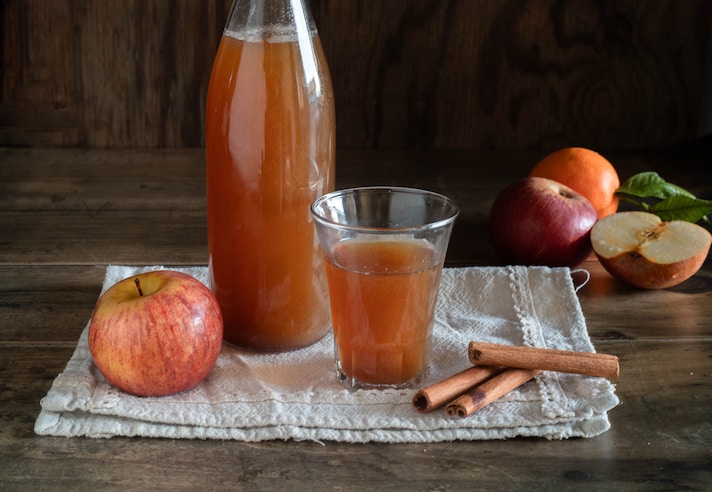
Now all you need to do is pour the cider into a small, heavy-bottomed saucepan, add the granulated sugar, orange and lemon zest and juice, water, cinnamon stick, cloves, and sliced ginger, and simmer for about 10 minutes. Once ready and strained, you can sip the warm cider as a snack or after a meal on cold winter days, or serve it as an alternative aperitif with friends.
;Resize,width=767;)
